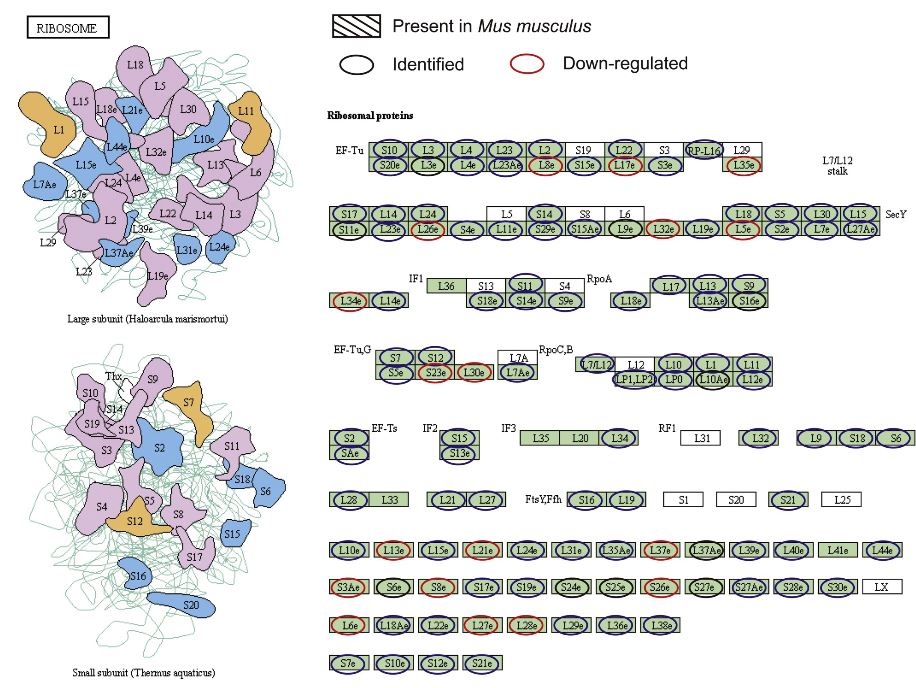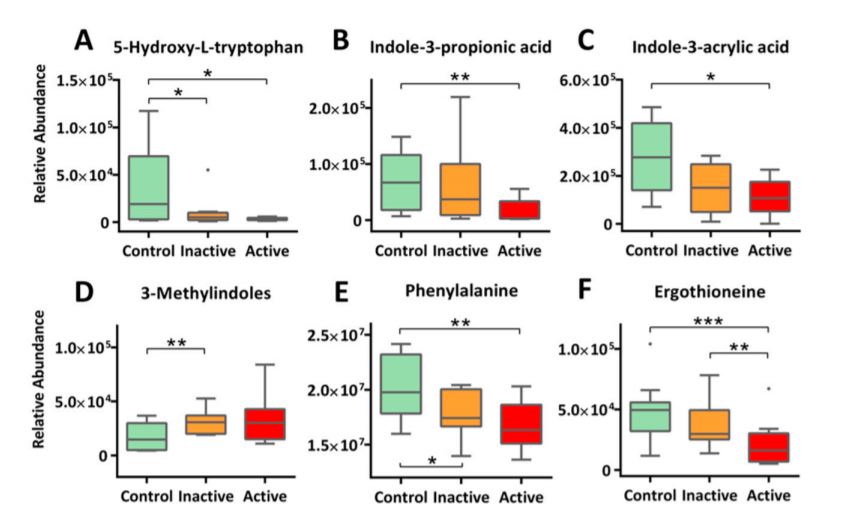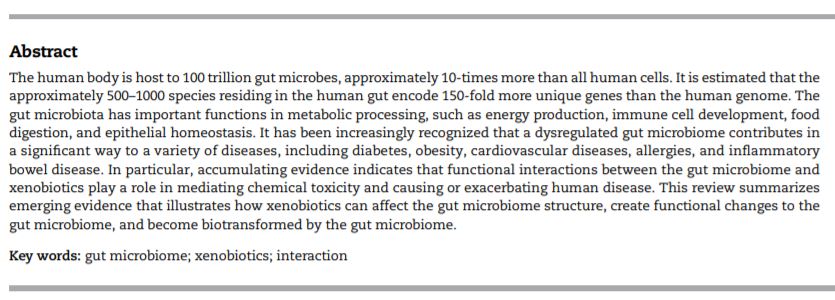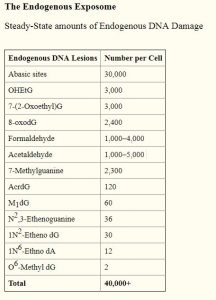Publications
Selected Publications
A: students or postdoc *: Corresponding author
60. Jiapeng Leng A, Chih-Wei Liu A, Hadley J. Hartwell, Rui Yu, Yongquan Lai, Wanda M. Bodnar, Kun Lu*, James A. Swenberg*. Evaluation of inhaled low-dose formaldehyde-induced DNA adducts and DNA–protein cross-links by liquid chromatography–tandem mass spectrometry,Archives of Toxicology, 2019, In press
59. Chih-Wei Liu A, Liang Chi A, Pengcheng Tu A, Jingchuan Xue A, Hongyu Ru, Kun Lu*. Quantitative proteomics reveals systematic dysregulations of liver protein metabolism in sucralose-treated mice. Journal of Proteomics. 2019, In press
58. Yunjia Lai A, Jingchuan Xue A, Chih-Wei Liu A, Bei Gao A, Liang Chi A, Pengcheng Tu A, Kun Lu and Hongyu Ru*. Serum Metabolomics Identifies Altered Bioenergetics, Signaling Cascades in Parallel with Exposome Markers in Crohn’s Disease. Molecules, 2019, in press
57. Liu Chih-Wei A , Chi Liang A, Tu Pengcheng A, Xue JinchuanA and Lu Kun*. Isobaric Labeling Quantitative Metaproteomics for the Study of Gut Microbiome Response to Arsenic. Journal of Proteome Research, 2018, in press

56. Xue Jinchuan A, Lai Yunjia A, Chi Liang A, Tu Pengcheng A, Leng Jiapeng, Liu Chih-Wei A, and Lu Kun*. Serum metabolomics reveals that gut microbiome perturbation mediates metabolic disruption induced by arsenic exposure in mice. Journal of Proteome Research, 2018, in press

55. Chi Liang A, Xue jingchuan A, Tu Pengcheng A, Lai Yunjia A, Ru Hongyu, and Lu Kun. Gut microbiome disruption altered the biotransformation and liver toxicity of arsenic in mice. Archives in Toxicology, 2018, in press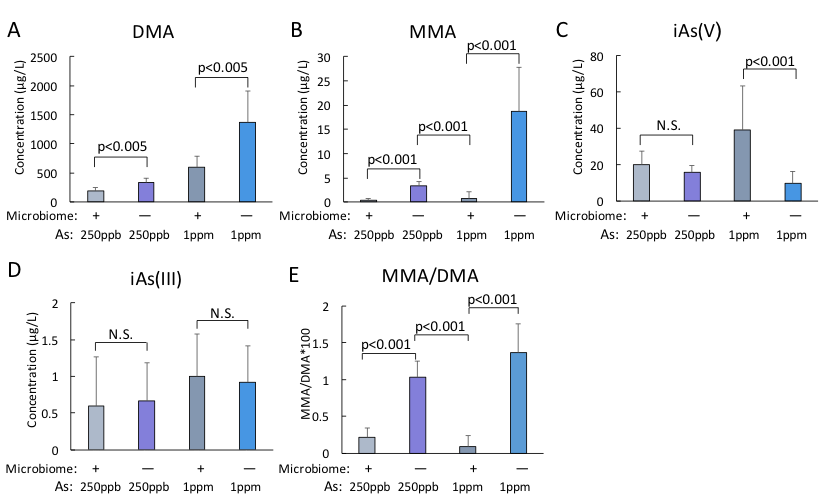
54. Gao Bei A, Chi Liang A, Tu Pengcheng A, Gao Nan, and Lu Kun*. The Carbamate Aldicarb Altered the Gut Microbiome, Metabolome, and Lipidome of C57BL/6J Mice. Chemical Research in Toxicology, 2018, in press

53. Tu Pengcheng A, Bian Xiaoming A, Chi Liang A, Gao Bei A, Ru Hongyu, Thomas J Knobloch, Christopher M. Weghorst*, and Lu Kun*. A Simple Approach to Modulate Mouse Gut Microbiome by Boosting Akkermansiamuciniphila with Dietary Black Raspberries. ACS Omega, 2018, in press

52. Liu Chih-Wei A, Tian Xu, Hartwell J. Hadley, Chi Liang A, Lu Kun* and JA Swenberg*. Accurate Measurement of Formaldehyde–Induced DNA–Protein Crosslinks by High-resolution Orbitrap Mass Spectrometry. Chemical Research in Toxicology, 2018, In press

51. Chi Liang A, Tu Pengcheng A, Lai Yunjia A, Ru Hongyu, Xue JinchuanA and Lu Kun*. Individual susceptibility to arsenic-induced diseases: the role of host genetics, nutritional status and gut microbiome. Mammalian Genome, 2018, s00335-018-9736-9, 1-17

50. Chi Liang A, Yunjia Lai A, Tu Pengcheng A, Jinchuan Xue A, and Lu Kun*. The Artificial Sweetener Neotame Affects the Gut Microbiome Profile and Fecal Metabolites in CD-1 Mice. Molecules, 2018, 23, 367,1-11

49. Gao Bei A, Chi Liang A, Tu Pengcheng A, Bian Xiaoming A, Jesse Thomas, Ru Hongyu, and Lu Kun*. The Organophosphate Malathion Disturbs Gut Microbiome Development and the Quorum-Sensing System. Toxicology Letter, 2018, 283,52-57

48. Wu Fen, Chi LiangA, Ru Hongyu, Parvez Faruque, Slavkovich Vesna, Eunus Mahbub, Ahmed Alauddin, Islam Tariqul, Rakibuz-Zaman Muhammad, Hasan Rabiul, Sarwar Golam, Graziano Joseph H., Ahsan Habibul, Lu Kun, Chen Yu. Arsenic exposure and urinary metabolomics. Environmental Health Perspectives, 2017, 126,1,017005,1-7

47. Chi Liang A, Mahbub Ridwan A, Gao Bei A, Bian Xiaoming A, Tu Pengcheng A, Ru Hongyu Ru and Lu Kun*. Nicotine alters the gut microbiome and chemical signaling of gut-brain interactions in a sex-specific manner. Chemical Research in Toxicology, 2017, 30, 12, 2110-2119 (featured by the American Chemical Society press release)

46. Chi Liang A, Bian Xiaoming A, Gao Bei A, Tu Pengcheng A, Ru Hongyu Ru and Lu Kun*. The Effects of an Environmentally Relevant Level of Arsenic on the Gut Microbiome and its Functional Metagenome. Toxicological Sciences, 2017, 160, 2, 193-204

45. Bian Xiaoming A, Chi Liang A, Tu Pengcheng A, Gao Bei A, Ru Hongyu, and Lu Kun*. Gut microbiome response to sucralose and its potential role in inducing liver inflammation in mice. Frontiers in Physiology, 2017, 8, 487,1-13

44. Chi Liang A, Gao Bei A, Bian Xiaoming A, Tu Pengcheng A, Ru Hongyu Ru and Lu Kun*. Manganese-induced Sex-specific Gut Microbiome Perturbations in C57BL/6 Mice. Toxicology and Applied Pharmacology, 2017, 341, 142-153

43. Gao Bei A, Tu Pengcheng Tu A, Bian Xiaoming Bian A, Chi Liang A, Ru Hongyu Ru, and Lu Kun*. Profound perturbation induced by triclosan exposure in mouse gut microbiome: A less resilient microbial community with elevated antibiotic and metal resistomes. BMC Pharmacology and Toxicology, 2017, 18,46,1-12

42. Chen D, Fang Lei, Mei S, Li H, Xu Xia, Des Marais TL, Lu Kun, Liu X, and Chunyuan Jin. Regulation of chromatin assembly and cell transformation by formaldehyde exposure in human cells. Environmental Health Perspectives, 2017, 097019, 1-14

41. Bian Xiaoming A, Chi Liang A, Gao Bei A, Tu Pengcheng A, Ru Hongyu Ru, and Lu Kun*. The Artificial Sweetener Acesulfame Potassium Affects the Gut Microbiome and Body Weight Gain in CD-1 Mice. PLOS ONE, 2017,0178426, 1-16
40. Bian XiaomingA, Tu PengchengA, Chi LiangA, Gao BeiA, Ru Hongyu, and Lu Kun*. Saccharin induced liver inflammation in mice by altering the gut microbiota and its metabolic functions. Food and Chemical Toxicology, 2017, 107, 530-539

39. Gao BeiA, Bian XiaomingA, Mahbub RidwanA, and Lu Kun*. Gender-Specific Effects of Organophosphate Diazinon on the Gut Microbiome. Environmental Health Perspectives, 2017, 125, 2, 198-206 (Selected as Papers of the Month by the NIEHS)

38. Gao BeiA, Bian XiaomingA, Chi LiangA, Tu PengchengA, Ru Hongyu, and Lu Kun*. Organophosphate Diazinon Altered Quorum Sensing, Cell Motility, Stress Response, and Carbohydrate Metabolism of Gut Microbiome. Toxicological Sciences, 2017,157, 354-364 (selected as “Editor’s Highlight”)

37. Gao BeiA, Mahbub RidwanA, Chi LiangA, Bian XiaomingA, Tu PengchengA, Ru Hongyu, and Lu Kun*. Multi-Omics Reveals that Lead Exposure Disturbs Gut Microbiome Development, Key Metabolites, and Metabolic Pathways. Chemical Research in Toxicology, 2017, 30, 4, 996-1005

36. Chi LiangA, Bian XiaomingA, Gao BeiA, Ru Hongyu, Tu PengchengA, and Lu Kun*. Sex-specific effects of arsenic on the trajectories and function of the gut microbiome. Chemical Research in Toxicology, 2016, 29,6, 949-951

35. Yin Lei, Yu Kevin, Lu Kun, and Yu Xiaozhong. Benzyl Butyl Phthalate Promotes Adipogenesis in 3T3-L1 Preadipocytes: A High Content Cellomics and Metabolomic Analysis. Toxicology In Vitro, 2016, 25, 32, 297-309

34. Lu Kun*, Mahbub RidwanA, Fox James. Xenobiotics: Interaction with the Intestinal Microflora. Institute for Laboratory Animal Research (ILAR) Journal, 2015, 56, 2, 218-27 (Invited review on microbiome)
33. Lu Kun*, Abo Ryan, Schlieper Katherine, Graffam Michelle, Levine Stuart, Wishnok John, Swenberg James, Tannenbaum Steven, and Fox James. Arsenic Exposure Perturbs the Gut Microbiome and Its Metabolic Profile in Mice: An Integrated Metagenomics and Metabolomics Analysis. Environmental Health Perspectives, 2014, 122, 3, 284-291 (Featured in Science Selection)

32. Lu Kun*, Mahbub RidwanA, Cable Peter, Ru Hongyu, Parry Nicola, Bodnar Wanda, Wishnok John, Styblo Miroslav, Swenberg James, Fox James, and Tannenbaum Steven. Gut Microbiome Phenotypes Driven by Host Genetics Affect Arsenic Metabolism. Chemical Research in Toxicology, 2014, 27, 2, 172–174

31. Nakamura Jun, Mutlu Esra, Sharma Vyom, Collins Leonard, Bodnar Wanda, Yu Rui, Lai Yongquan, Moeller Benjamin, Lu Kun, and Swenberg James. The Endogenous Exposome. DNA Repair, 2014, 19, 1, 3-13
30. Lu Kun*, Cable Peter, Abo Ryan, Ru Hongyu, Graffam Michelle, Schlieper Katherine, Parry Nicola, Levine Stuart, Bodnar Wanda, Wishnok John, Styblo Miroslav, Swenberg James, Fox James, and Tannenbaum Steven. Gut Microbiome Perturbations Induced by Bacterial Infection Affect Arsenic Biotransformation. Chemical Research in Toxicology, 2013, 26, 12, 1893-903

29. Swenberg James, Moeller Benjamin, Lu Kun, Rager Julia, Fry Rebecca, and Starr Thomas. Formaldehyde Carcinogenicity Research: 30 Years and Counting for Mode of Action, Epidemiology, and Cancer Risk Assessment. Toxicologic Pathology, 2013, 41, 2, 181-189

28. Knutson Charles, Mangerich Aswin, Zeng Yu, Raczynski Arkadiusz, Liberman Rosa, Kang Pilsoo, Ye Wenjie, Prestwich Erin, Lu Kun, Wishnok John, Korzenik Joshua, Wogan Gerald, Fox James, Dedon Peter, and Tannenbaum Steven. Features of Innate Immunity Dominate Serum and Tissue Protein and Cytokine Profiles in Both Mouse and Human Inflammatory Bowel Disease. Proceedings of the National Academy of Sciences of the United States of America, 2013, 110, 26, E2332-41

27. Cui Liang, Lee YieHou, Kumar Yadunanda, Xu Fengguo, Lu Kun, OoiEngEong, Tannenbaum Steven, and Ong Choon Nam. Serum Metabolome and Lipidome Changes in Adult Patients with Primary Dengue Infection. PLOS Neglected Tropical Diseases, 2013, 7, 8, 1-13
26. Lu Kun, Knutson Charles, Wishnok John, Fox James, and Tannenbaum Steven. Serum Metabolomics in a Helicobacter Hepaticus Mouse Model of Inflammatory Bowel Disease Reveals Important Changes Originating in the Microbiome, Serum Peptides, and Intermediary Metabolism. Journal of Proteome Research, 2012, 11, 10, 4916-4926

25. Lu Kun, Craft Sessaly, Nakamura Jun, Moeller Benjamin, and Swenberg James. Use of LC-MS/MS and Stable Isotopes to Differentiate Hydroxymethyl and Methyl DNA Adducts from Formaldehyde and Nitrosodimethylamine. Chemical Research in Toxicology, 2012, 25, 3, 664-675 (Featured In This Issue by the Editor)

24. Lu Kun, Gul Husamettin, Upton Patricia, Moeller Benjamin, and Swenberg James. Formation of Hydroxymethyl DNA Adducts in Rats Orally Exposed to Stable Isotope Labeled Methanol. Toxicological Sciences, 2012, 126, 1, 28-38
23. Lu Kun, Moeller Benjamin, Doyle-Eisele Melanie, McDonald Jacob, and Swenberg James. Molecular Dosimetry of N2-Hydroxymethyl-dG DNA Adducts in Rats Exposed to Formaldehyde. Chemical Research in Toxicology, 2011, 24, 2, 159-161 (Featured In This Issue by the Editor)

22. Swenberg James, Lu Kun, Moeller Benjamin, Gao Lina, Upton Patricia, Nakamura Jun, and Starr Thomas. Endogenous Versus Exogenous DNA Adducts: Their Role in Carcinogenesis, Epidemiology, and Risk Assessment. Toxicological Sciences, 2011, 120, l, S130-S145

21. Moeller Benjamin, Lu Kun, Doyle-Eisele Melanie, McDonald Jacob, Gigliotti Andrew, and Swenberg James. Determination of N2-Hydroxymethyl-dG Adducts in the Nasal Epithelium and Bone Marrow of Nonhuman Primates Following 13CD2-Formaldehyde Inhalation Exposure. Chemical Research in Toxicology, 2011, 24, 2, 162–164

20. Lu Kun, Collins Leonard, Ru Hongyu, Bermudez Edilberto, and Swenberg James. Distribution of DNA Adducts Caused by Inhaled Formaldehyde is Consistent with Induction of Nasal Carcinoma but not Leukemia. Toxicological Sciences, 2010, 116, 2, 441-451 (Highlighted by a Special Editor-in-Chief Commentary)
19. Lu Kun, Ye Wenjie, Zhou Li, Collins Leonard, Chen Xian, Gold Avram, Ball Louise, and Swenberg James. Structural Characterization of Formaldehyde-Induced Cross-Links Between Amino Acids and Deoxynucleosides and Their Oligomers. Journal of the American Chemical Society, 2010, 132, 10, 3388-3399

18. Lu Kun, Ye Wenjie, Gold Avram, Ball Louise, and Swenberg James. The Formation of S-[1-(N2-Deoxyguanosinyl)Methyl]Glutathione Between Glutathione and DNA During the Detoxification of Formaldehyde. Journal of the American Chemical Society, 2009, 131, 10, 3414-3415

17. Lu Kun, Boysen Gunnar, Gao Lina, Collins Leonord, and Swenberg James. Formaldehyde-Induced Histone Modifications In Vitro. Chemical Research in Toxicology, 2008, 21, 8, 1586-1593




